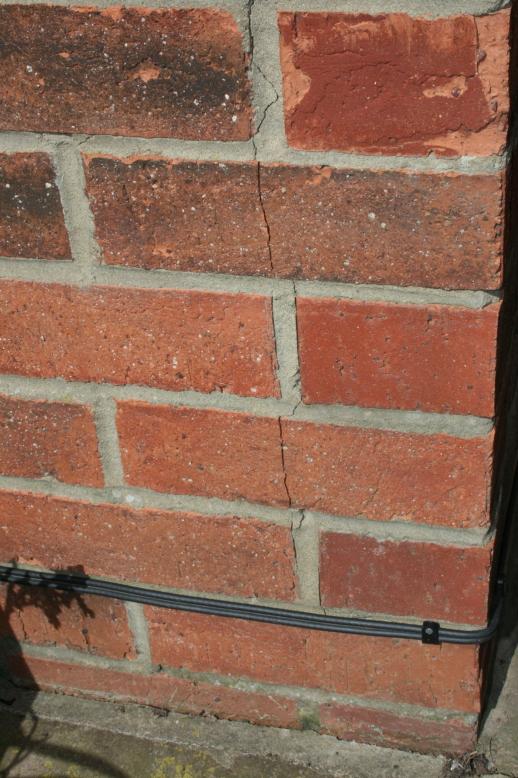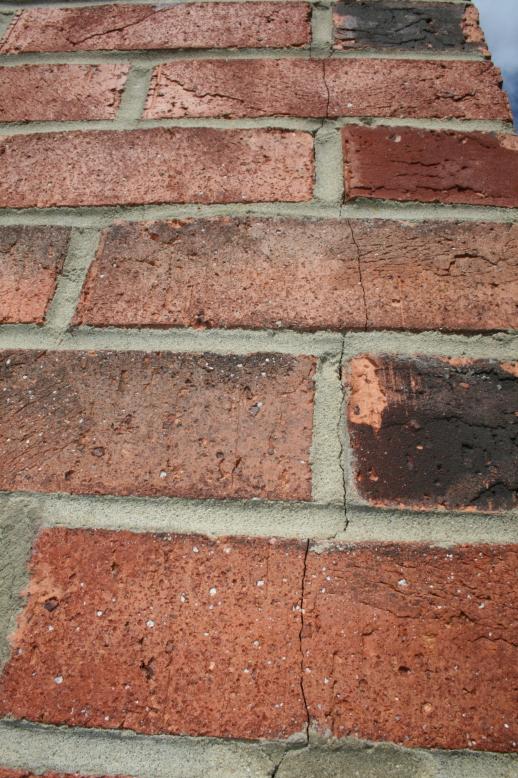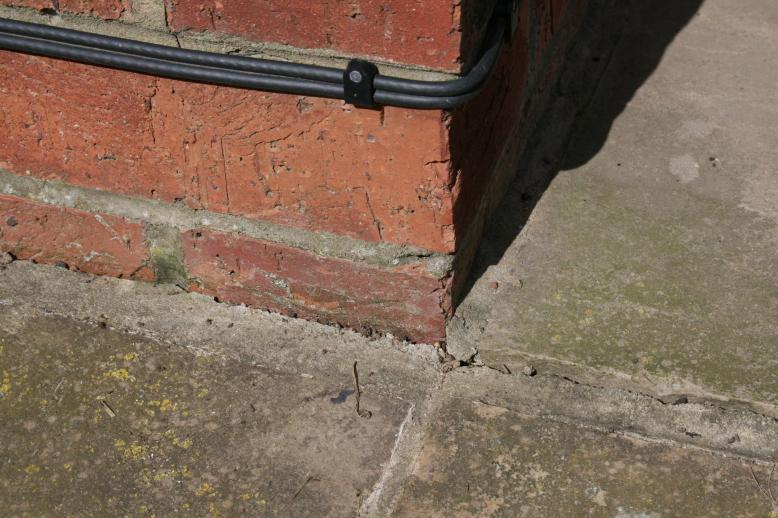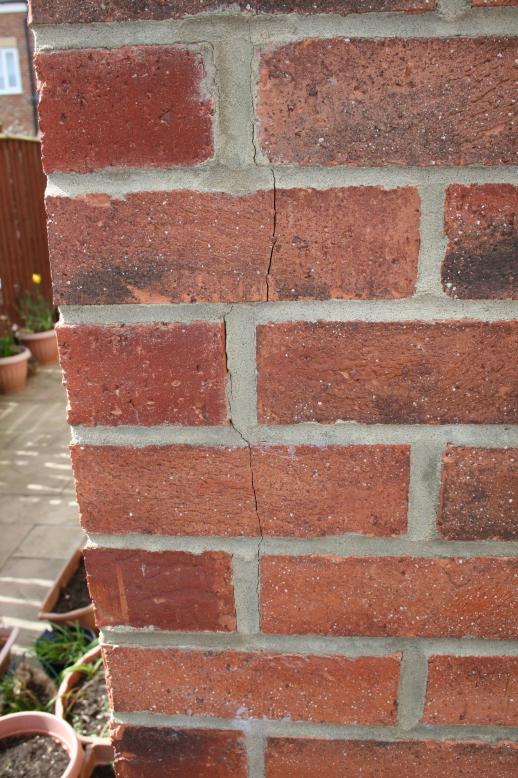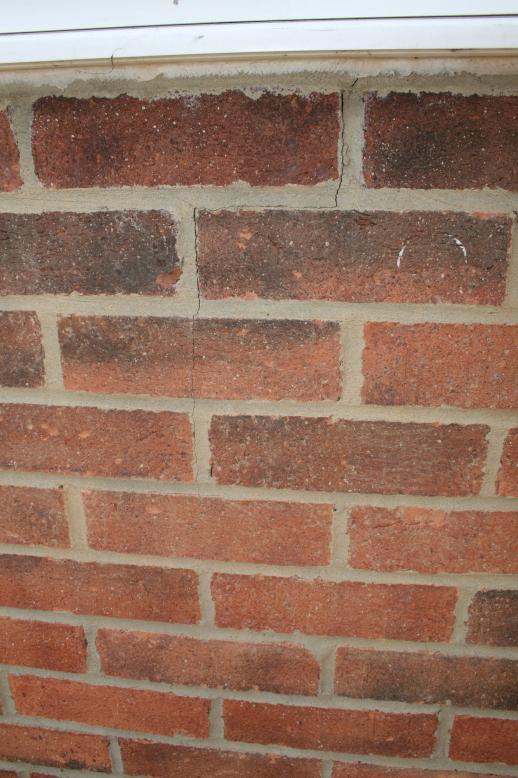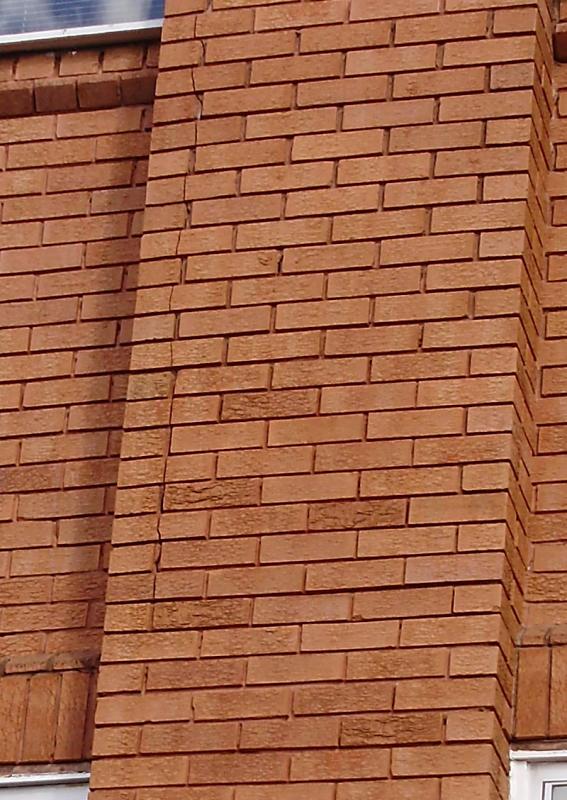Hi!
I'm looking at making an offer on a house, but I've noticed that it has some cracks on an external brick wall. They seem narrow and not extremely long, but a few bricks are cracked. This is at a corner of the house. It is impossible to see if there are cracks inside, because it's a kitchen with fitted cupboards. The house is quite new, just 8 years old.
I'm not sure if I should pay for a structural survey, so I would appreciate any feedback. Here are some photos attached.
The biggest cracks are on a South-facing wall near a corner. There is one at the bottom of the wall (about 3 feet long):
There is another one 4 feet up (about 3 feet long, too):
The cracks don't seem to extend to the foundations, but the patio at the base of the corner seems to have slightly dropped:
The East-facing wall has another crack near the same corner:
The East-facing wall also has a crack below a window:
And that's it. Also, there is an extension attached to the East-facing wall (at about 6.5 feet from the corner mentioned). Could it be related to the extension?
So, what do you guys think? Do you think this could be a serious problem? I read online that it can be due to thermal expansion, but I am not sure if this is the case. If it is not worrying, I would prefer not to pay for the structural survey. Especially, because the house is a detached house and all the other external brick walls seem to be fine.
Many thanks in advance,
John
I'm looking at making an offer on a house, but I've noticed that it has some cracks on an external brick wall. They seem narrow and not extremely long, but a few bricks are cracked. This is at a corner of the house. It is impossible to see if there are cracks inside, because it's a kitchen with fitted cupboards. The house is quite new, just 8 years old.
I'm not sure if I should pay for a structural survey, so I would appreciate any feedback. Here are some photos attached.
The biggest cracks are on a South-facing wall near a corner. There is one at the bottom of the wall (about 3 feet long):
There is another one 4 feet up (about 3 feet long, too):
The cracks don't seem to extend to the foundations, but the patio at the base of the corner seems to have slightly dropped:
The East-facing wall has another crack near the same corner:
The East-facing wall also has a crack below a window:
And that's it. Also, there is an extension attached to the East-facing wall (at about 6.5 feet from the corner mentioned). Could it be related to the extension?
So, what do you guys think? Do you think this could be a serious problem? I read online that it can be due to thermal expansion, but I am not sure if this is the case. If it is not worrying, I would prefer not to pay for the structural survey. Especially, because the house is a detached house and all the other external brick walls seem to be fine.
Many thanks in advance,
John


